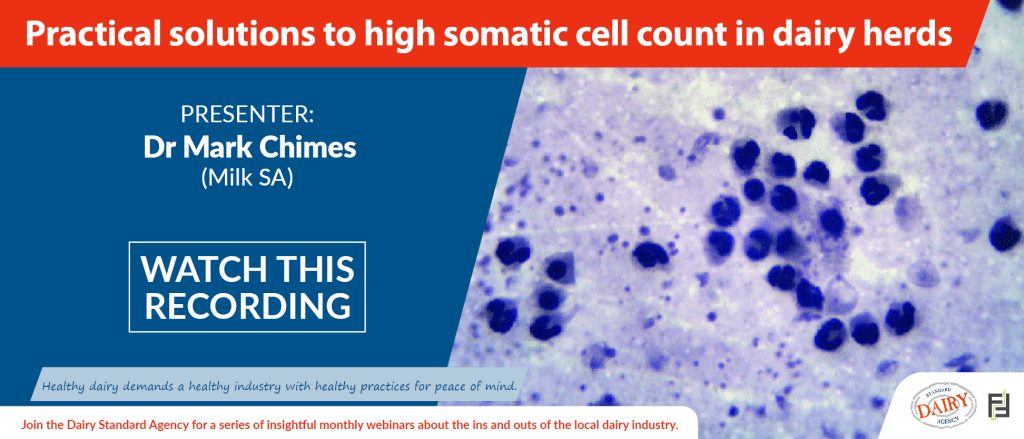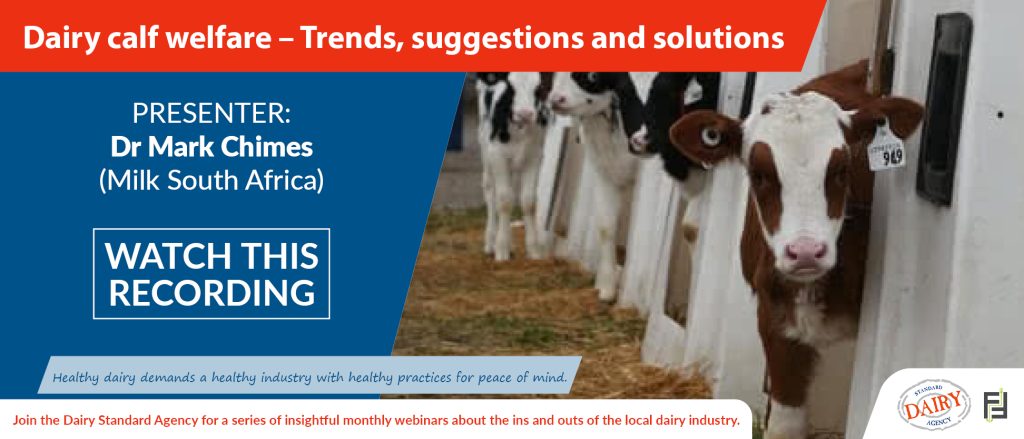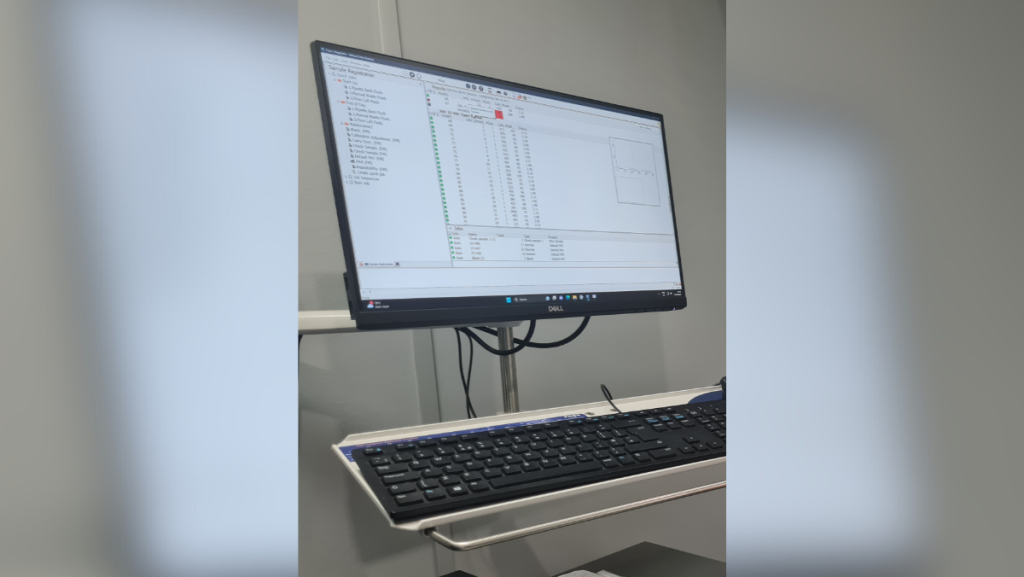Status Quo of the Dairy Regulatory Landscape

Status Quo of the Dairy Regulatory Landscape Webinar discussion The dairy products must comply with prescribed minimum requirements prescribed by a fragmented food legislative system. The Acts as the broader laws and the regulations made under them as supplementary laws prescribe the minimum quality, safety and metrology marking requirements. The food regulatory landscape is influenced […]
SSA – 2024 was ‘n jaar van veerkragtigheid

Die Suiwelstandaardagentskap het in 2024 ‘n hele paar hoogtes bereik en kan volgens besturende direkteur, Jompie Burger, met die woord “veerkragtigheid” opgesom word. In die onderstaande potgooi, deel hy ‘n paar doelwitte vir 2025 en die oorwinning van die jaar wat verby is.
Practical solutions to high somatic cell count in dairy herds

How to reduce bulk tank somatic cell count (SCC) quickly and how to keep SCC count down over the long term are frequently asked questions. There is a long list of causes for an increase in SCC. As a result, the list of possible solutions is just as long. In this webinar we discuss and […]
A practical approach to hygienic design of dairy equipment

The hygienic design of dairy equipment aims to prevent contamination (biological, chemical, physical) of the product or material flow through ingress, accumulation or growth. As a pre-requisite programme (PRP), it supports HACCP in a Food Safety Management System (FSMS) by limiting the number of foreseeable hygiene risks to a practical minimum and by facilitating mitigation […]
Let’s Explore the Dairy Matrix

In recent years, nutrition science has shifted focus from examining individual nutrients to understanding the health effects of whole foods. This approach acknowledges that the nutrient composition of a food doesn’t always predict its overall health impacts. Whole foods, such as dairy products, are made up of complex structures containing various nutrients, bioactive compounds, and […]
Safety aspects of pesticides on dairy farms

Pesticides are intrinsically hazardous of nature but the risks of storing and using pesticides and related animal health products on dairy farms can be mitigated or eliminated by playing according to the safety rules. Safe storage, safe application, proper cleaning and disposal of empty containers, and safe disposal of obsolete or redundant pesticides will be […]
Dairy calf welfare trends, suggestions and solutions

“If we want people to still be drinking real milk in 20 or 30 years, we need to give them a reason to drink milk, not just shoot down their reasons not to drink it.” – Canadian Dairy Farmer 2022. Ignore the trends in dairy calf welfare at your own peril. There is a disconnect between how the public perceive […]
Let’s troubleshoot cheesemaking and get solutions to your challenges!

After the previous cheese fermentation webinar, we received numerous requests for assistance with challenges experienced during cheesemaking. This follow up webinar focused on the most common challenges during cheesemaking. Hans focused on the following topics:
Fermentation techniques that play a role in cheesemaking and ripening

Fermented dairy products, particularly cheese, have been used for thousands of years to preserve milk, to make it more transportable, readily available, and more digestible because of lactose breakdown during the fermentation process. There are various fermentations that play an important role in cheese making and cheese ripening. As they say…” Age is not important […]
DSA Lab Services: The real test of quality

DSA Lab Services: The real test of quality The promotion of quality milk and dairy products is extremely important, as inferior quality products can be catastrophic to the South African dairy industry and its consumers. This is the foundation on which the Dairy Standard Agency (DSA) has been built. To fortify its focus even more, […]